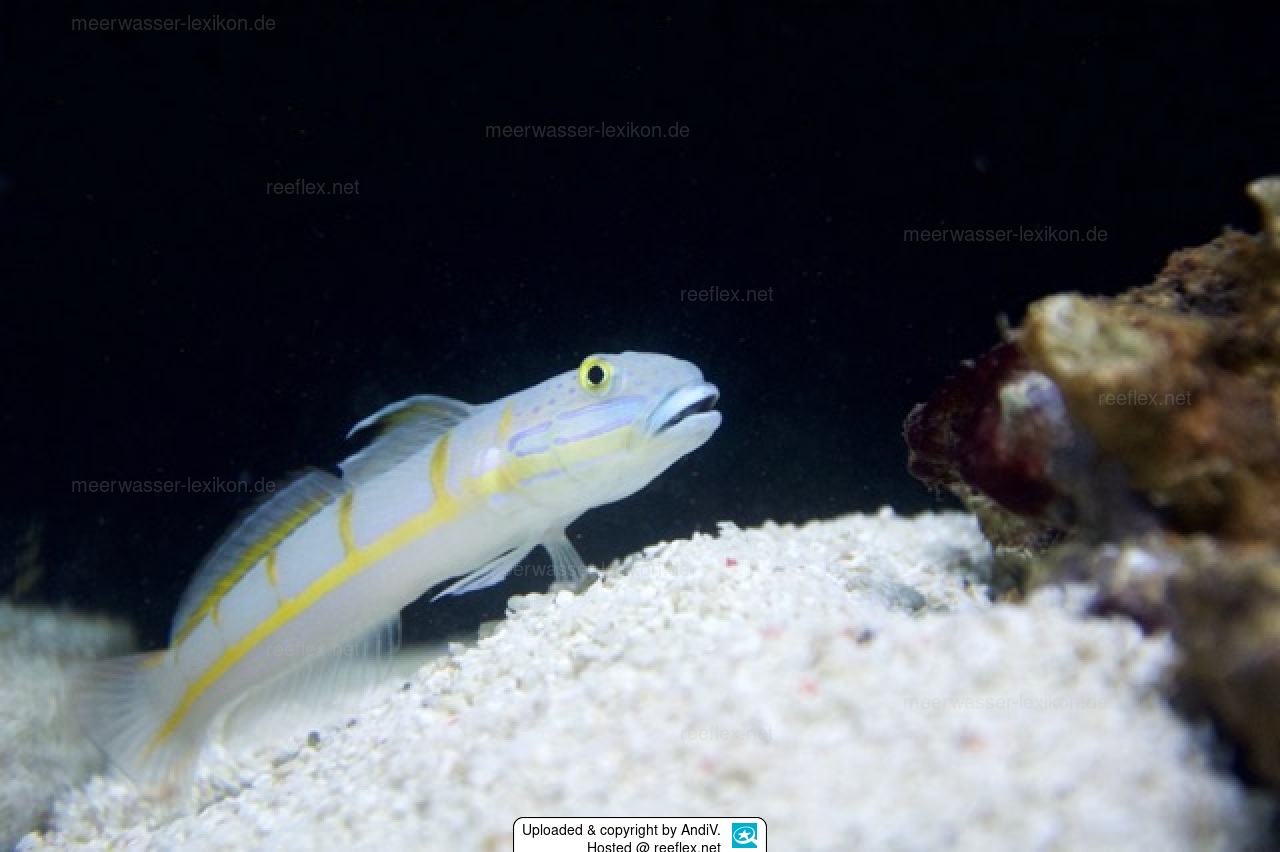Info
Valenciennea decora Hoese & Larson, 1994
This goby is only very rarely found in German specialist retailers. If this happens in exceptional cases, the animals are also quite expensive; the interested owner has to budget up to €400 per pair.
The animals behave very calmly in the aquarium and stay in place even when eating. In any case a highlight in the pool.
Note: Gobies in our saltwater aquariums very often starve to death. The more the animals dig, the more energy they lose and this can create a vicious circle, which in the first step leads to a fierce competition between a pair that is actually well-coordinated (there is not enough food for both of them). animals present in the tank) and finally the remaining goby becomes thinner and thinner.
Solution: It makes sense to supply the gobies with frozen food directly by bringing the food directly to the entrance to the built cave after the rest of the population has been fed their fill.
In addition, additional food, e.g. food granules or food tablets, should be provided over the entire dredging area in question for the gobies so that the gobies can actually consume food during dredging.
Jumping guard
A jumping guard prevents (nocturnal) fish from jumping out.
Wrasses, blennies, hawkfishs and gobies jump out of an unprotected tank in fright if their night rest is disturbed, unfortunately these jumpers are found dried up in the morning on carpets, glass edges or later behind the tank.
https://www.korallenriff.de/en/article/1925_5_Jump_Protection_Solutions_for_Fish_in_the_Aquarium__5_Net_Covers.html
A small night light also helps, as it provides the fish with a means of orientation in the dark!
This goby is only very rarely found in German specialist retailers. If this happens in exceptional cases, the animals are also quite expensive; the interested owner has to budget up to €400 per pair.
The animals behave very calmly in the aquarium and stay in place even when eating. In any case a highlight in the pool.
Note: Gobies in our saltwater aquariums very often starve to death. The more the animals dig, the more energy they lose and this can create a vicious circle, which in the first step leads to a fierce competition between a pair that is actually well-coordinated (there is not enough food for both of them). animals present in the tank) and finally the remaining goby becomes thinner and thinner.
Solution: It makes sense to supply the gobies with frozen food directly by bringing the food directly to the entrance to the built cave after the rest of the population has been fed their fill.
In addition, additional food, e.g. food granules or food tablets, should be provided over the entire dredging area in question for the gobies so that the gobies can actually consume food during dredging.
Jumping guard
A jumping guard prevents (nocturnal) fish from jumping out.
Wrasses, blennies, hawkfishs and gobies jump out of an unprotected tank in fright if their night rest is disturbed, unfortunately these jumpers are found dried up in the morning on carpets, glass edges or later behind the tank.
https://www.korallenriff.de/en/article/1925_5_Jump_Protection_Solutions_for_Fish_in_the_Aquarium__5_Net_Covers.html
A small night light also helps, as it provides the fish with a means of orientation in the dark!







 AndiV
AndiV




















